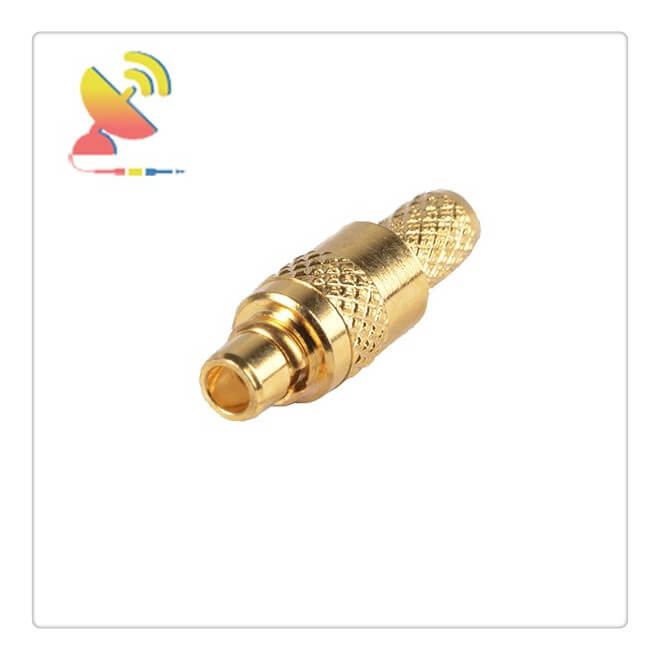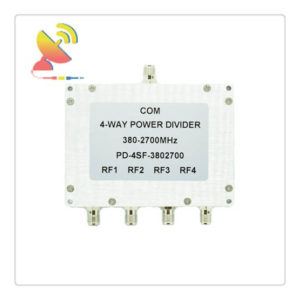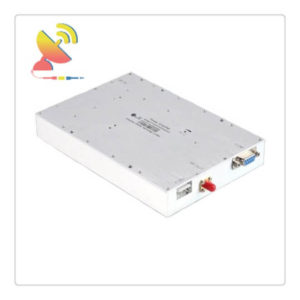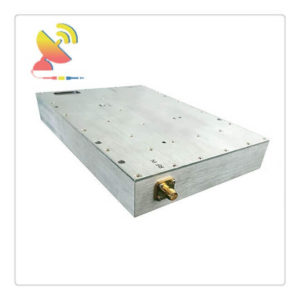Description
What is a MMCX Connector MMCX Male RF Cable Connector?
C&T RF Antennas Inc’s MMCX connectors mostly are RoHS and REACH compliant. MMCX connectors in this category will terminate to coax or PCB (printed circuit board). Our MMCX connector product line is built to precise microwave and RF industry specifications.
C&T RF Antennas Inc’s MMCX connectors are constructed in jack or plug gender with 50 Ohm impedance. MMCX connectors are available in straight or right-angle versions, as well as, mountless options.
These MMCX connector designs include crimp/solder or solder attachment methods. We offer MMCX connector products with standard or high-performance levels constructed with brass or stainless steel bodies.
MMCX Connector FEATURES
Performance up to 6 GHz
Simple snap-on coupling
Right-angle and through-hole jacks and plugs
RG 174, RG 316, or RG 178 cable terminations
Jacks and plugs for high-vibration environments
Jack with switchable internal/external antenna
Non-magnetic options available for medical and aerospace applications
C&T RF Antennas Inc provides internal & external antennas with antenna radio frequencies such as NFC, 169MHz, 230MHz, 315MHz, 433MHz, 868MHz, 915MHz, VHF&UHF, Lora, NB-IoT, ADS-B, GSM, GNSS, GPRS, 1.2 GHz, 1.4 GHz, 1.8 GHz, Wi-Fi 2.4 GHz, 5.8 GHz, Cellular 2G, 3G, 3.5 GHz, 4G LTE, GPS, 5G NR, 6G, etc.
C&T RF Antennas Inc. provides RF antennae with Omni & Directional antenna types such as Dipole Antennas, Whip Antennas, Marine Antennas, Router Antennas, MIMO Antennas, Combo Antennas, PCB Antennas, FPC Antennas, Spring Antennas, Magnetic Antennas, Sector Antennas, Yagi Antennas, and Accessories, etc, for IoT & M2M industries.
MMCX Connector Specifications:
| Item NO.: CTRF-ANTENNA-CN-MMCX-Male
Key Specifications of the MMCX Male coaxial cable connector |
|
| Connector Series | MMCX |
| Connector Gender | Male |
| Connector Polarity | Standard |
| Connector Angle | Straight |
| Connector Mount Method | None |
| Connector Impedance | 50Ohms |
| Frequency | DC 0-6Ghz |
| V.S.W.R | ≤1.5 |
| Voltage Breakdown | DC500V/50Hz |
| Insertion Loss | ≤0.1dB/GHz |
| Insulation Resistance | ≥1000MΩ |
| Contact Resistance | Shell≤2.5mΩ; Center Pin≤5mΩ |
| Center Pin Retention | ≥20g |
| Mating Cycles | >500 |
| Storage Temperature | -40℃~+80℃ |
| Storage Temperature | -40℃~+80℃ |
| Engagement Force | Insert: Max 1.8KG |
| Separation Force | Extract: Min 0.6KG; Max 1.8KG |
| Junction Retention | ≥5KG |
| Color | Golden |
C&T RF Antennas Inc. MMCX connectors are fully mateable with competitive MMCX products and conform to the CECC interface specifications.
MMCX connectors are available in a broad range of standard configurations, including PCB and panel mount, flexible and semi-rigid cable. Tape and reel packaging is available on surface mount products to facilitate high-volume manufacturing.
Other options can be reviewed as well, including additional cable sizes, and adapters.
The MMCX connector series is a cost-effective solution for the challenging demands of today’s commercial marketplace. It offers one of the smallest conventional crimp terminations without special tooling. Call us for additional information or samples of the MMCX connector series.
MMCX Connector?
The MMCX connector is a coaxial radio frequency connector that complies with the European Electronic Components Committee 22000 transmission specification.
The MMCX interface was developed in the 1990s and adopts a plug-in clamp connection method that can rotate 360 degrees.
Micro-miniature coaxial (MMCX) connectors are coaxial RF connectors similar to MCX but smaller. They conform to the European CECC 22000 specification. MMCX connectors are rated to 500 pairing cycles.
Usually, its characteristic impedance is 50 ohms. The MMCX interface is commonly found in the antenna interface on the wireless PC card of the personal computer and on the GPS communication antenna socket of some PDAs and GPS navigation devices. On some in-ear headphones, the MMCX interface is also used to change the data line.
Coaxial cable
A coaxial cable is a kind of wire and signals transmission line. It is generally made of four layers of materials: the innermost is a conductive copper wire, the outside of the wire is surrounded by a layer of plastic (for insulators and dielectrics), and the outside of the insulator has a thin layer.
Net-shaped conductor (usually copper or alloy), and then the outermost insulating material is used as the outer skin of the conductor. According to the size, the coaxial cable has different standard specifications, ranging from 1/8 inch to 9 inches in diameter.
Cable Types
According to the different insulation mediums, the inner and outer conductors are mainly divided into:
The foam-insulated radio frequency coaxial cable, according to the transmission properties, is divided into transmission cables and leaky cables (LCX).
Transmission cables are ordinary feeders, mainly used for radio frequency signal transmission, while leaky cables have hundreds or thousands of small holes (or slots) on their outer conductors.
These holes correspond to many radio frequency emission points so that the power can be Multi-point radiation along the cable, which integrates signal transmission and signal transmission and reception functions.
It has the dual functions of coaxial cable and antenna. It is specially used for some roads, railway tunnels, subways, buildings, mines, large exhibition halls, or airports Areas where wireless signal propagation is limited and difficult to cover.
Currently, foam-insulated radio frequency coaxial cables are mainly used as radio frequency signal transmission cables for cellular mobile communication systems such as GSM, CDMA, UMTS, LTE, etc. In addition, there are also other applications, such as the connection between antenna arrays, radiofrequency Connection, or jumper between the equipment and indoor coverage system.
Foam insulated cable
The insulators of the foam-insulated cables are made of physically foamed polyethylene materials; foam-insulated cables are generally used in the telecommunications industry.
Air-insulated cable
Air insulation means that the insulating medium between the inner and outer conductors is air, and the inner conductor is spirally supported by an insulating solid medium between the inner conductor and the outer conductor. Air-insulated cables are generally used for various high-power radio frequency transmissions.
According to the shape of the outer conductor, coaxial cables are divided into:
Corrugated coaxial cable. Generally speaking, corrugated cables have better flexibility and reliability, and the bending radius performance is better than straight walls. Therefore, corrugated tube outer conductor coaxial cables are mainly used in the industry.
Straight wall coaxial cable
According to different outer conductor materials, the current transmission cables are mainly divided into two categories: copper feeder and aluminum feeder. Aluminum cable has a relatively good cost advantage because of its huge price fluctuations relative to international copper prices and relatively small price fluctuations.
Since the inner conductor of the aluminum cable still uses copper as the propagation medium, its electrical performance is equivalent to that of the copper outer conductor cable, and operators are slowly accepting this new feeder type.
Terminal
Coaxial terminal, or connector. It can be regarded as a short, rigid cable. It must be designed with the same standard impedance as the cable, and the RF signal will not penetrate or lose from the interface. High-quality cables are often silver-plated or gold-plated, and lower-quality cables are also tinned. Although silver is easily oxidized, silver oxide is also conductive, so it will not affect the effect too much when it is old.
Application of coaxial cable
Short-distance coaxial cables are generally used in home audio-visual equipment or amateur radio equipment. In addition, it was once widely used in an Ethernet connection until it was replaced by a twisted pair.
Long-distance coaxial cables are often used as TV signal lines in radio or TV station networks. In the future, there will be a trend of being gradually replaced by other high-tech equipment, such as optical fiber, T1/E1, artificial satellites, etc. However, because coaxial cables are relatively cheap and have already been laid, they are still in use today.Foam-insulated coaxial transmission cable
Main communication applications:
The cellular mobile communication system
Microwave communication system
Shortwave defense system
Broadband network
Land mobile radio system
Leaky cable
Main communication applications:
Tunnel and basement coverage (road tunnel, railway tunnel, subway)
Commercial mobile communication services and dedicated communication services. For example, FM broadcasting in the tunnel, to improve the problem that the wireless broadcast signal cannot be received in the tunnel
Wireless communication coverage of large buildings, such as airports, parks, etc.
Rail transit signal system
Air-insulated cable
Main application:
Radio and TV stations
AM and FM
Wireless analog TV and wireless digital TV
MDS and MMDS
Radiofrequency
Radiofrequency, also known as high frequency, is an oscillating frequency in the range of 3 kHz to 300 GHz. This frequency is equivalent to the frequency of radio waves and the frequency of alternating current carrying radio signals.
RF is usually used to refer to electronic oscillations, not to mechanical oscillations. However, mechanical radio frequency systems still exist (such as mechanical filters and radio frequency microelectromechanical systems).
Although radio frequency is used by definition to refer to a frequency, in daily use, it is often used as a synonym for radio to describe wireless communication systems, such as radio frequency identification.
Among the radio frequency allocations defined by the International Telecommunication Union:
Very low frequency (VLF): 3~30 kilohertz (kHz)
Low frequency (LF): 30~300 kilohertz (kHz)
Intermediate frequency (MF): 300~3000 kilohertz (kHz)
High frequency (HF): 3~30 MHz (MHz)
Very high frequency (VHF): 30~300 MHz (MHz)
Ultra-high frequency (UHF): 300~3000 MHz (MHz)
Super-high frequency (SHF): 3~30 GHz (GHz)
Extremely high frequency (EHF): 30~300 GHz (GHz)






Reviews
There are no reviews yet.